If you’re managing your sodium intake, finding flavorful baked goods can be a challenge. That’s why this Low Sodium Bread Recipe is a game changer.
Designed for individuals who want to reduce salt without compromising on taste, this bread is soft, fluffy, and surprisingly satisfying.
Whether you’re following a heart-healthy diet or simply looking for better food choices, homemade bread gives you full control over the ingredients—no hidden salts or preservatives.
Most store-bought bread can contain up to 250mg of sodium per slice, but this version contains significantly less, making it a smart, wholesome choice.
With simple ingredients and a bit of patience, you can make this low sodium bread at home even if you’re a beginner baker.
This recipe is perfect for sandwiches, toast, or just enjoying warm out of the oven with a little unsalted butter. Let’s get started with this healthy and delicious Low Sodium Bread Recipe!
Personal Experience
When I first started watching my sodium intake, bread was one of the hardest things to give up. I experimented with several recipes, but they either lacked texture or flavor.
Finally, I created this Low Sodium Bread Recipe that strikes the perfect balance—light, slightly nutty, and versatile.
Now, it’s a staple in my weekly meal prep, and I feel great knowing exactly what’s in every slice.
Equipment List
- Large mixing bowl
- Measuring cups and spoons
- Stand mixer with dough hook (optional)
- Wooden spoon or dough scraper
- Loaf pan (9×5-inch)
Clean kitchen towel or plastic wrap - Oven
- Wire cooling rack
Ingredients List
- 3 cups all-purpose flour (or bread flour)
- 1 ¼ cups warm water (110°F)
- 2 teaspoons sugar or honey (optional, for yeast activation)
- 2 ¼ teaspoons (1 packet) active dry yeast
- 1 tablespoon olive oil
- 1 teaspoon apple cider vinegar (adds flavor without sodium)
- Optional: 1 tablespoon ground flaxseed or rolled oats for texture
Note: This Low Sodium Bread Recipe contains less than 10mg of sodium per slice, depending on flour and added mix-ins.

Low Sodium Bread Recipe – Step-by-Step Preparation
Step 1:
Activate the Yeast: In a small bowl, combine warm water and sugar (or honey). Stir in the yeast and let it sit for 5–10 minutes until foamy.
Step 2:
Mix the Dough: In a large bowl, combine flour and optional flaxseed. Add in the foamy yeast mixture, olive oil, and apple cider vinegar. Mix until a shaggy dough forms.
Step 3:
Knead the Dough: Turn the dough out onto a floured surface. Knead for 8–10 minutes by hand, or 5 minutes with a stand mixer until smooth and elastic.
Step 4:
First Rise: Place the dough in a lightly oiled bowl. Cover with a damp towel or plastic wrap and let it rise in a warm place for 1 to 1.5 hours, or until doubled in size.
Step 5:
Shape the Loaf: Punch down the dough, shape it into a log, and place it in a greased 9×5-inch loaf pan.
Step 6:
Second Rise: Cover and let the dough rise again for 30–45 minutes, until it just peaks over the edge of the pan.
Step 7:
Bake: Preheat your oven to 375°F (190°C). Bake the loaf for 30–35 minutes, until golden brown and hollow-sounding when tapped.
Step 8:
Cool: Remove from the pan and cool on a wire rack for at least 1 hour before slicing.
Tips For Success
- Use fresh yeast: Old or expired yeast won’t rise properly—check the expiration date before starting.
- Measure ingredients accurately: Too much flour makes the bread dense; use the spoon-and-level method.
- Warm water is key: Yeast activates best in water between 105–110°F.
- Allow full rise times: Rushing the process will lead to flat or dense bread.
- Cool completely before slicing: Cutting too soon lets steam escape and ruins texture.
- Add herbs for flavor: Sodium-free garlic powder, rosemary, or onion flakes enhance taste naturally.
- Use bread flour for a chewier texture: While all-purpose works, bread flour provides more structure.
Variations
- Whole Wheat Version: Swap 1 cup of flour for whole wheat flour for more fiber.
- Seeded Loaf: Mix in chia, sunflower, or flax seeds for extra texture and nutrients.
- Herb Infused: Add sodium-free herbs like rosemary, basil, or oregano to boost flavor naturally.
- Oatmeal Topping: Sprinkle rolled oats on top before baking for a rustic look.
- Mini Rolls: Shape into 8 small rolls and reduce bake time to 20–25 minutes.
Conclusion
This Low Sodium Bread Recipe is not only simple but also life-changing for anyone trying to cut back on salt.
With a handful of pantry staples and a little patience, you can bake a fresh, healthy loaf that fits your dietary needs.
Whether you’re new to baking or a seasoned pro, this recipe is sure to become a go-to favorite in your kitchen. Give it a try—you won’t miss the salt!
FAQs
How should I store homemade low sodium bread?
Store your cooled loaf in an airtight container or zip-top bag at room temperature for up to 3 days.
For longer storage, slice the loaf and freeze the slices individually. Toast straight from the freezer as needed.
Can I make gluten-free low sodium bread?
Yes, you can adapt this low sodium bread recipe using a gluten-free flour blend designed for yeast baking.
Be sure to include xanthan gum if your blend doesn’t already have it. The texture will vary slightly, but it can still yield a delicious, heart-healthy loaf.
Can I make this bread in a Dutch oven?
Yes, though the texture will be different. For a crustier exterior, you can bake the dough in a preheated Dutch oven with the lid on for the first 20 minutes, then remove the lid to finish baking.

Low Sodium Bread Recipe
Equipment
- Large mixing bowl
- Measuring cups and spoons
- Wooden spoon or dough scraper Stand mixer with dough hook (optional)
- Loaf pan (9×5 inch)
- Clean kitchen towel or plastic wrap
- Oven
- Wire cooling rack
Ingredients
- 3 cups all-purpose flour or bread flour
- 1 ¼ cups warm water 110°F
- 2 teaspoons sugar or honey optional, for yeast activation
- 2 ¼ teaspoons 1 packet active dry yeast
- 1 tablespoon olive oil
- 1 teaspoon apple cider vinegar adds flavor without sodium
- Optional: 1 tablespoon ground flaxseed or rolled oats for texture
Instructions
- Activate the Yeast: In a small bowl, combine warm water and sugar (or honey). Stir in the yeast and let it sit for 5–10 minutes until foamy.
- Mix the Dough: In a large bowl, combine flour and optional flaxseed. Add in the foamy yeast mixture, olive oil, and apple cider vinegar. Mix until a shaggy dough forms.
- Knead the Dough: Turn the dough out onto a floured surface. Knead for 8–10 minutes by hand, or 5 minutes with a stand mixer until smooth and elastic.
- First Rise: Place the dough in a lightly oiled bowl. Cover with a damp towel or plastic wrap and let it rise in a warm place for 1 to 1.5 hours, or until doubled in size.
- Shape the Loaf: Punch down the dough, shape it into a log, and place it in a greased 9×5-inch loaf pan.
- Second Rise: Cover and let the dough rise again for 30–45 minutes, until it just peaks over the edge of the pan.
- Bake: Preheat your oven to 375°F (190°C). Bake the loaf for 30–35 minutes, until golden brown and hollow-sounding when tapped.
- Cool: Remove from the pan and cool on a wire rack for at least 1 hour before slicing.
Notes
- Use fresh yeast: Old or expired yeast won’t rise properly—check the expiration date before starting.
- Measure ingredients accurately: Too much flour makes the bread dense; use the spoon-and-level method.
- Warm water is key: Yeast activates best in water between 105–110°F.
- Allow full rise times: Rushing the process will lead to flat or dense bread.
- Cool completely before slicing: Cutting too soon lets steam escape and ruins texture.
- Add herbs for flavor: Sodium-free garlic powder, rosemary, or onion flakes enhance taste naturally.
- Use bread flour for a chewier texture: While all-purpose works, bread flour provides more structure.





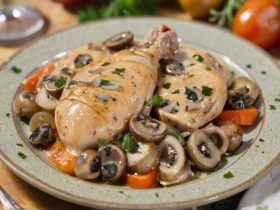





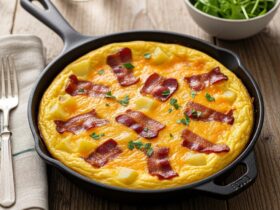

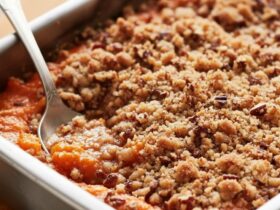
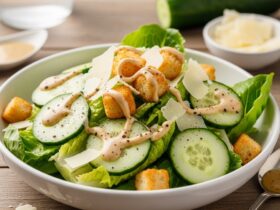
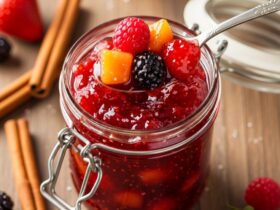
Leave a Reply